Making Of The 21st Century Nalanda University

Internationally acclaimed scientist, Dr Vijay Bhatkar is at the helm of the revival of Nalanda University in his role as Chancellor. This prestigious university has a legendary reputation as the world’s premier educational institute for scholars between the 5th and the 12th century. Dr Bhatkar walks the talk with Corporate Citizen on how the 21st century avatar of this prestigious university is taking shape, to match its past glory
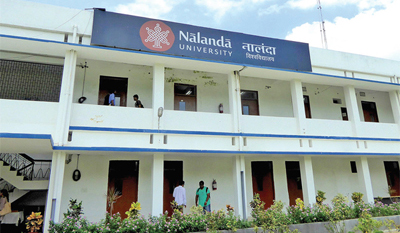 One of the buildings of the modern Nalanda University
One of the buildings of the modern Nalanda UniversityDr Vijay Bhatkar is one of the most acclaimed and internationally acknowledged computer scientists of India. As the Chancellor of Nalanda University, he is committed to resurrecting the glory of ancient Nalanda, in the context of the 21st century. He has held prestigious positions including the Chairman of Board of Governors of IIT Delhi from 2012 to 2017. He is best known as the architect of India’s national initiative in supercomputing, where he led the development of India’s first supercomputer, Param in 1990. Currently, he is steering the National Supercomputing Mission of developing Exascale Architecture Supercomputing for India.
Dr Bhatkar is also widely known for bringing Information and Communications Technology (ICT) to the masses through a wide range of path-breaking initiatives, such as the celebrated GIST multilingual technology covering India’s 22 official languages with 10 diverse scripts that have dissolved the language barrier on computers once for all; Maharashtra Knowledge Corporation’s (MKCL) computer literacy programme that made a mark by creating 10 million computer literates within a decade. In the 80s, Dr Bhatkar substantially contributed to the ushering of the electronics revolution in India. He is also credited with the creation of several national research labs and institutions, notable amongst them being C-DAC, ER&DC Trivandrum, IIITM-K, TechnoPark, MKCL, amongst others. Simultaneously, he has mentored several innovation-based startups.
Dr Bhatkar has served as a member of the Scientific Advisory Committee to PM, Member of the Governing Council of CSIR and a member of the IT Task Force constituted by PM in 1998.
Corporate Citizen talks to him in his role as the Chancellor of Nalanda University to understand his vision of the revival of an esteemed education institution that had earned a legendary reputation in Asia, as the numero uno campus for scholars.
Corporate Citizen: Tell us about your tenure at Nalanda University how did you get to this position and what made you take it up?
Dr Vijay Bhatkar : The Nalanda University project was started by the Nalanda Trust about three and a half years back, at the behest of Dr Abdul J Kalam who suggested its revival during one of his visits to Bihar. I got an invitation asking me whether I would be interested in taking over as its Chancellor. I was enthusiastic about the making of the Nalanda University of the 21st century. Prior to this, I was the Chairman of Board of Governors of IIT Delhi from 2012 to 2017 and several other positions but Nalanda has its own magic. I reciprocated, stating that I would be really interested and I would like to make whatever contribution I could. I was offered the post of Chancellor of the university-in-the-making, in March 2017, for which I went through the required formalities. I was aware that it was a prestigious assignment and there would be considerable expectations from me.
By following the Net Zero approach, Nalanda University is expected to reduce energy use of the campus by 63% as compared to modern day concrete buildings. The objective was to bring back nostalgia, 800 years after the original infrastructure was destroyed in the 12th century
CC: What were your main challenges when you took over as Chancellor of Nalanda University in March 2017?
We were offered 450 acres of land by the State Government in Rajgir in Bihar, which is next to the ancient Nalanda University. These ruins are a World Heritage site and come under the Archaeological Survey of India (ASI). I had visited it several times in the past as thousands of visitors from the country and overseas do, as tourists. The challenge of building a 21st century replica weaves its own magic and it was indeed exciting to bring it alive once again. However, there are stringent norms to build in proximity to these ruins as no construction is permitted within a 10-kilometre radius around it. Hence, building this infrastructure had to be in alignment and in harmony with the ruins of this great heritage.
After I took over in March 2017, we had an Academic Council Meeting and it was clear to us that we must have a great architecture for the university in keeping with its past glory. We decided to throw open international competition for well-known architects in India as well as around the world. The participants were required to make their presentations to the academic council. It is really fortunate and I was happy that the competition was won by an Indian firm from Ahmedabad. Dr Balkrishna Doshi is a renowned architect who was recently awarded the Pritzker Architecture Prize, the Nobel equivalent for the field. His presentation was very comprehensive as he had visited the site and studied the ancient architecture so that it blends with the new infrastructure that we were to build on the adjacent land. He was the only one who had done such a thorough study. Dr Doshi was assigned to take the project forward.
Nalanda university was known for its Buddhist studies with the largest campus in the world, for the same... We started post graduate courses and also offer PhD, through the School of Buddhist Studies, Philosophy and Comparative Religions; School of Ecology and Environment Studies, School of Historical Studies, School of Management Studies and School of Archaeological Studies
CC: What were the factors to be taken into account to build infrastructure alongside this world heritage site?
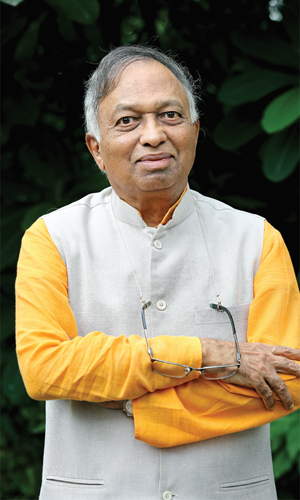
We wanted to have the same red colour bricks that were used for the ancient Nalanda University. The main condition was that we should have a green building which connotes sustainable architecture; follow stringent environmental norms and develop a Net Zero campus which means that all material of constructions, right from the soil, need to be localised in order that they blend with local ecology and the rural landscape. Just to give you an example, it is estimated that the Nalanda University would have consumed 5820 MWh electricity per annum and emitted GHG emission equivalent to nearly 52,415 million metric tonnes of carbon dioxide if standard building construction practices had been adopted. By following the Net Zero approach, the University is expected to reduce the energy use of the campus by 63% as compared to modern-day concrete buildings. The objective was to bring back nostalgia, 800 years after the original infrastructure was destroyed in the 12th century.
CC: So, you quite literally sowed the seeds of the ambitious campus…
Yes. Building the University was my first task, which was challenging as it is not so smooth sailing to get works done in the state of Bihar. Also, it was the first time in the world that such a large campus on an area of 450 acres was to have a Net Zero approach. There are several other Net Zero campuses but they are built in a relatively small area.
The next challenge was the choice of academic courses to be conducted here. We had several brainstorming sessions over the kind of academics that should be pursued here to distinguish it from other universities in terms of academics and research. Nalanda was known for its Buddhist studies during that time and was a university with the largest campus in the world, for the same. The other renowned university was Takshashila which was founded much earlier than Nalanda and both were schools of Buddhist and ancient studies. So, we started postgraduate courses and also offer PhD, through the School of Buddhist Studies, Philosophy and Comparative Religions; School of Ecology and Environment Studies; School of Historical Studies; School of Management Studies which has the MBA in Sustainable Development & Management and School of Archaeological Studies.
The next challenge was to select a Vice Chancellor for which we had advertised for the post and received over 400 entries. We selected Dr Sunaina Singh, who is one of the most prominent educationists of higher education & was working with the Ministry of External Affairs (MEA). In fact, the Nalanda University comes under the MEA which is different from all other universities which come under the Ministry of Human Resources Development (MHRD), because many countries are supporting it.
When I took over and met Mrs Sushma Swaraj, who was the then Minister of MEA, I told her that I envisioned that, like the IITs which are known for excelling in Science and Technology, Nalanda would also be a world-class institution but for humanities. It will teach languages, literature and historical studies. And that’s how the academic activities began, along with the construction activities. There is always a curiosity about Nalanda and many well-known personalities visit it. The President of India visited us several times for our convocations. The international community too includes a visit to this university in the Buddhist tour circle of India which also includes other places like Bodhgaya, Lumbini and so on.
CC: Could you tell us why Nalanda University has been designated as an institution of national importance?
The ancient Nalanda University was of international importance between the 5th and the 12th century and so there is a lot of curiosity amongst people to know the history of Nalanda. At that time, it impacted the world so much because of noted Chinese and Tibetan scholars who came to study in Nalanda University which had the largest library in the world. It was later burnt in 1193 by Bakhtiyar Khilji. There is so much written about it by Chinese scholars like Xuan Zang that visitors from China continue to want to visit it. Fortunately, many of the manuscripts were preserved by the Japanese, as princes and monks from various countries came there for studies. Many Tibetans scholars came and so they translated several Pali manuscripts in the Tibetan language. These were preserved in the Tibetan Monastery. And after the Dalai Lama came to India, he brought many manuscripts along. We are going to take up the discussion with the Dalai Lama, who is in Dharamshala, regarding the replication of those manuscripts in India. I started this project with a big Yagna calling it Mission Nalanda to achieve goals in a certain time.
Today, we have students, not only from all over India but also from the Buddhist countries. There are also students from China, Nepal, Malaysia and Korea. Today, we have 180 students and plan to expand to 1000 students very soon.
Science is the study of Panch Mahabhootas the five elements of the universe earth, water, fire, wind and space. Everything originates from these five elements. Spirituality is your own consciousness and trying to understand it. One must know both and that spurred my pursuit in philosophy
CC: You have an amazing combination of scientific temperament and spiritual yearnings. How do you blend the two & how has this enabled giving guidance to Nalanda University?
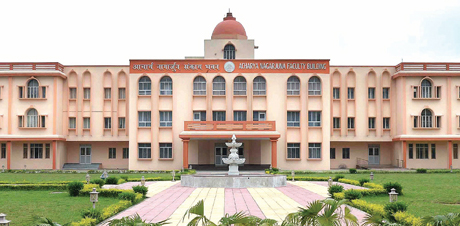 A glimpse of a building of the 21st century Nalanda
University,
A glimpse of a building of the 21st century Nalanda
University,where scholars of Humanities will study
I come from the science and technology background but in the process, I got affiliated to different branches of learning. I got interested in spiritual literature and I learnt that science and spirituality are the two aspects of the same knowledge. One is incomplete without the other. In the Bhagwat Gita in Chapter 7, Dhyaan Vigyaan Yog, Krishna says, one ought to know both spheres if you have to have complete knowledge. This is beautifully translated by Sant Dnyaneshwar in his Dnyaneshwari epic, explaining what science is and what is spirituality. He says, all the problems of the world prevail because most of us know only one aspect of it. And, as you know, half knowledge is dangerous. So, they must be studied together as enunciated in Bhagwat Gita. I have got guidance from my Guru Sakhre Maharaj, which further enhanced my interest. Science is the study of Panch Mahabhootas the five elements of the universe – earth, water, fire, wind and space. Everything originates from these five elements. Spirituality is your own consciousness and trying to know and understand it. One must know both and that spurred my pursuit in philosophy.
CC: Dr Kalam had mooted the idea of the revival of this university. Could you share how that happened?
When the former President of India, Dr A.P.J. Abdul Kalam mooted the idea of reviving the ancient Nalanda University while addressing the Bihar State Legislative Assembly in March 2006, the first step towards realising the dream of reinventing the old Nalanda had been taken. Almost simultaneously, the Singapore Government presented the Nalanda Proposal to the Government of India, suggesting the re-establishment of ancient Nalanda to make it as the focal point of Asia once again. The State Government of Bihar was quick to adopt the visionary idea and consulted with the Centre, on the way ahead. At the same time, it began its search for a suitable location for the new Nalanda University.
CC: You were also associated with the MIT educational institution. What was your role there?
When the World Peace Centre (Alandi) of MAEER’s MIT, Pune, India, was established on December 1, 1996, by Dr Vishwanath Karad, he invited me to be a part of it. I was composing and organising international conferences of World Peace and I’m still associated with it, from programme to programme.
CC: Since you organise international conferences, do you think people abroad are sensitive to science and spirituality or it is more in India?
Science and spirituality came together since our ancient times. It has been taught in Bhagwat Gita itself and was pioneered in Takshashila and Nalanda and other universities of that era. It is post World War II notable scientists around the world realised that science alone cannot give solutions to the world. Thus, many scientists and philosophers have studied the blend of science and spirituality together, which is accessible in scores of books they wrote.
CC: You are the architect of India’s Supercomputer. Could you take our readers down the memory lane of how you achieved this?
In the late 80s, supercomputing technology was the sole preserve of the USA and to some extent, Japan. In 1985, when India wanted to import a supercomputer from the USA for weather forecasting, which is critical for India’s agriculture on which most of India’s population depended, it was denied the same. The then Prime Minister of India, Rajiv Gandhi in 1987 posed the formidable challenge of developing India’s own supercomputer to Indian scientists through Science Advisory Committee (SAC). I was entrusted with India’s supercomputing mission and delivering the same in a comprehensive manner covering science, technology, machine, applications, national facilities, and creating of the next generation of young engineers in advanced computing.
Mr Nambiar, Secretary of the Electronics Commission proposed that I take up the challenge of developing a supercomputer. Coming from the Electronic discipline, I accepted the challenge and gave a presentation. Rajiv Gandhi asked me the time required for developing it and the economic cost. I elaborated on the cost and gave him a timeline of three years. Thus, we began our journey in 1988, by forming a new institute called the Centre for Developing Advanced Computing (C-DAC). We made the first prototype in two years and exhibited it in Zurich in 1990 where a conference on supercomputers was being held. We were appreciated in Zurich where it was declared that India has developed supercomputer technology. So, India won the reputation of being one of the few countries that have developed a supercomputer
Dr Vishwanath Karad and I have been working on the solution of the Ayodhya issue. We thought that it should not be just a temple, but should have all the historical documentation of the Ramayana
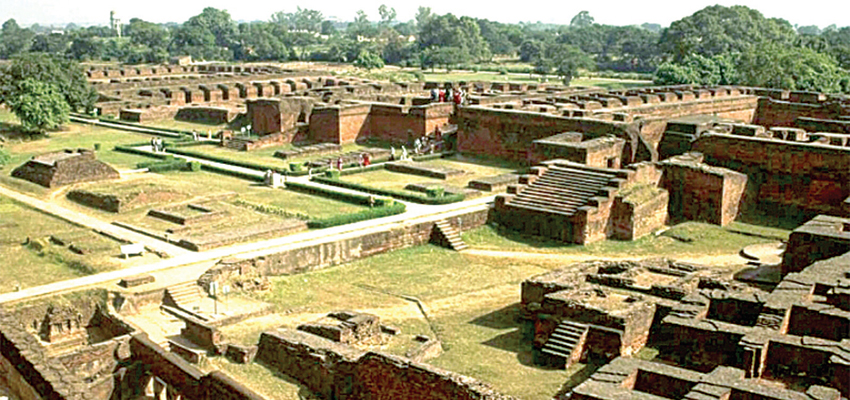 It was a challenge to come up with a modern Nalanda University next to these glorious ruins
It was a challenge to come up with a modern Nalanda University next to these glorious ruinsCC: From then coming to the present, where do you think India stands in computing technology?
Computing technology is being developed every 10 years at different costs. The first supercomputer was developed in 1991 in three years the performance was of one billion mathematical operations per second. The next one that we developed was of one trillion mathematical operations per second in 1998 and then we started developing supercomputers called Exascale supercomputers.
Exascale computers will definitely help India to scale new heights in technology and other fields. The future of high-performance computing lies in Exascale computing. From ancient times, India has been an agro-based economy as we were predominantly an agricultural country. Today, with the rise of Information Technology, we are called as an agro knowledge-based economy. I am happy to share that from being an agricultural economy to becoming a knowledge-based economy, C-DAC has played a vital role in the transformation. Income from the IT sector, which was a mere 8% to 9% of GDP is reaching 18% to 20% because of this transformation in technology.
CC: Tell us about your interesting project of building a library for the Ram Mandir in Ayodhya.
Dr Vishwanath Karad and I have been working on the solution of the Ayodhya issue. When the decision of the Supreme Court came in, we thought that it should not be just a temple, but we should have all the historical documentation of the Ramayana through manuscripts and make them available for research and studies. We would also be making available translations and commentaries. It’s a work in progress.
CC: Having remarkably dabbled in so many fields, what is your next plan of action?
I’m working on making a University of the future, which will have several branches of learning, based on the Vedic Knowledge System. It will have science and spirituality taught together and, of course, the contemporary disciplines will also be kept in mind.
CC: What is the motto of your life that you live by?
My motto is to use science and spirituality for the ascent of humanity.
CC: What is your take on the Covid-19 crisis?
I was contemplating as to how to address the situation myself and so I thought that when such a challenge comes, there is an opportunity of a different kind. I’ve been studying so much through videos on the YouTube channel. I am researching on what science holds for us in the future. It is very clear that we are going towards mind science; that is the sciences of consciousness. Eyes are related to the physical world and I am working on brain and mind consciousness. For this, we can challenge our young mind with the help of supercomputers.
Dissolving the Language Barrier on Computer
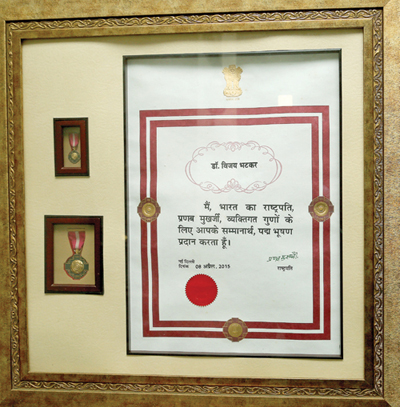
Wh ile launc h i ng the supercomputing mission of C-DAC in 1988, Dr Vijay Bhatkar foresaw the far-reaching impact computers will have on society at large and their language and cultures.
India, over its history of 10,000 years, had evolved diverse languages and cultures and this amazing diversity was its true richness. Computers in the 80s could be used only in English and some European languages and the work on Japanese and Chinese had just begun. India, at that time, had 16 official languages and these were written over 10 complex scripts having 57 main characters and hundreds of complex derived characters.
English was spoken then by barely 3%-4% of the population and if Indian languages were not available on computers then most of the population would miss the coming wave of the computer revolution. It is against this background, that Dr Bhatkar decided to formulate and undertake the multilingual technology mission complementing its main supercomputing mission. He then persuaded the Government to launch this mission and carved out around Rs.5 crore from the main mission, and initiated the development of multilingual technology.
In barely two years, C-DAC advanced the Indian Standard Code for Information Interchange (ISCII), which soon became a national standard, and came out with a design of a PC add-in card which made possible use of all 10 Indian scripts on the standard PC. C-DAC’s GIST group then developed a series of software for word processing and desktop publishing such as LEAP, ISM, etc. which soon became India’s most widely used software packages.
History and revival of Nalanda University
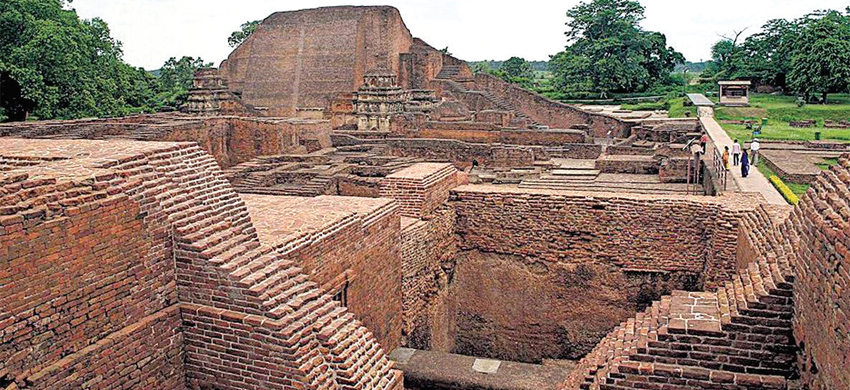 The ruins of the ancient Nalanda
University is still a tourists’ delight
The ruins of the ancient Nalanda
University is still a tourists’ delightHistorical sources indicate that the University had a long and illustrious life which lasted almost continually for 800 years from the fifth to the twelfth century.
It was a completely residential university believed to have 2,000 teachers and 10,000 students.
The Nalanda ruins reveal through their architectural components the holistic nature of knowledge that was sought and imparted at this University. It suggests a seamless co-existence between nature and man, and between living and learning.
The profound knowledge of Nalanda’s teachers attracted scholars from China, Korea, Japan, Tibet, Mongolia, Turkey, Sri Lanka, and South East Asia. These scholars have left records about the ambience, architecture, and learning at this unique university. The most detailed accounts have come from Chinese scholars and the best known of these is Xuan Zang who carried back many hundred scriptures which were later translated into Chinese.
A stretch of 450 acres of land at the base of the picturesque Rajgir Hills was identified and acquired to house its campus.
Leaders of 16 member states of the East Asia Summit (EAS) endorsed the proposal to re-establish Nalanda, when they met in the Philippines in January 2007. The idea garnered greater support subsequently. At the fourth EA Summit held in October 2009, at Hua Hin, Thailand, more members affirmed the merit of establishing the Nalanda University and encouraged the idea of regional networking and collaboration between the University and existing centres of excellence in East Asia
Finally, the project took off, when the Nalanda University Act 2010 was passed in both the Houses of the Indian Parliament. In September 2014, the University opened its doors for the first batch of students, a historic development after a gap nearly 800 years!